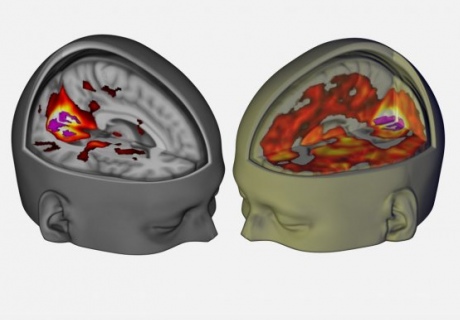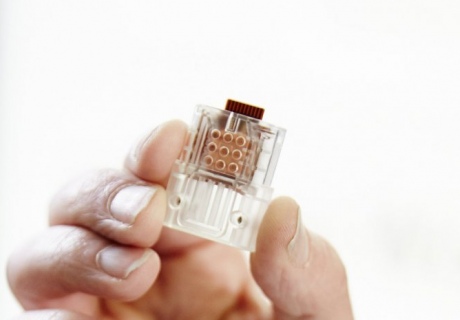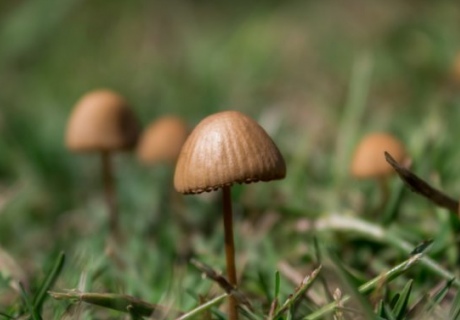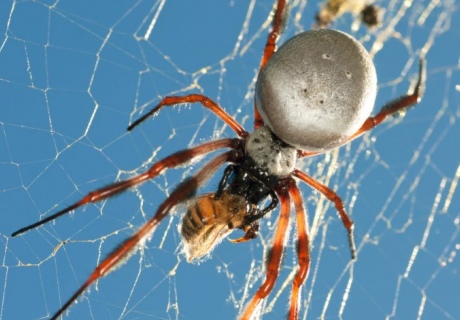8 times Imperial blew your mind in 2016

Imperial researchers stole the headlines in 2016 with some game-changing discoveries.
From technological innovations to theoretical advances, we take a look at some of the mind-blowing work academics from across the College’s faculties produced this year.
Hidden depths
 In January, an analysis of new satellite data hinted that the world's largest canyon may lie beneath the Antarctic ice sheet.
In January, an analysis of new satellite data hinted that the world's largest canyon may lie beneath the Antarctic ice sheet.
The previously unknown canyon is thought to be over 1,000 kilometres long and in places as much as a kilometre deep, which would make it comparable in depth to the Grand Canyon in United States, but many times longer.
Read more: World's largest canyon could be hidden under Antarctic ice sheet
Psychedelic insight
 For the first time, researchers visualised the effects of LSD on the brain. Conducted in partnership with the Beckley Foundation, Imperial medical researchers revealed what happens in the brain when people experience the complex visual hallucinations that are often associated with LSD state.
For the first time, researchers visualised the effects of LSD on the brain. Conducted in partnership with the Beckley Foundation, Imperial medical researchers revealed what happens in the brain when people experience the complex visual hallucinations that are often associated with LSD state.
Described as 'seeing with their eyes shut', the study showed that many additional areas of the brain become involved in visual processing when a subject takes LSD.
Read more: The brain on LSD revealed: first scans show how the drug affects the brain
Batteries not included
In October, Electrical and Electronic Engineering reseachers demonstrated a highly efficient method for wirelessly transferring power to a drone while it is flying.
The breakthrough could in theory allow flying drones to stay airborne indefinitely by simply hovering over a ground support vehicle to recharge, opening up new potential industrial applications. Additionally, this technology could offer medical and space exploration applications.
Read more: Flying drones could soon re-charge whilst airborne with new technology
HIV USB
 This one is pretty hot off the press. Last month, Imperial and DNA Electronics announced they had developed a device which uses a drop of blood to detect HIV, and then creates an electrical signal that can be read by a computer, laptop or handheld device.
This one is pretty hot off the press. Last month, Imperial and DNA Electronics announced they had developed a device which uses a drop of blood to detect HIV, and then creates an electrical signal that can be read by a computer, laptop or handheld device.
The disposable test could be used for HIV patients to monitor their own treatment. Furthermore, the technology could enable patients with HIV to be managed more effectively in remote locations.
Read more: HIV test performed on USB stick
Joint repairs
Researchers in the Department of Materials are part of a team that have developed a material that can mimic cartilage and potentially encourage it to re-grow.
As was announced in May, the team hope to use it to develop implants for replacing damaged cartilage discs between vertebrae.
Read more: New bio-glass could make it possible to re-grow or replace cartilage
Bang goes the theory
 A study of the early universe revealed how it could have been formed from an older collapsing universe, rather than being brand new. Released in July, the study demonstrated how the 'Big Bounce' - a phenomenon theorised for nearly 100 years, but never proven - might be possible.
A study of the early universe revealed how it could have been formed from an older collapsing universe, rather than being brand new. Released in July, the study demonstrated how the 'Big Bounce' - a phenomenon theorised for nearly 100 years, but never proven - might be possible.
Read more: The Big Bang might have been just a Big Bounce
Magical thinking
 In May, Dr Robin Carhart-Harris announced findings from a small-scale study into treating depression using psilocybin - the psychedelic compound of magic mushrooms.
In May, Dr Robin Carhart-Harris announced findings from a small-scale study into treating depression using psilocybin - the psychedelic compound of magic mushrooms.
The psychedelics expert found that the compound can be safely administered without causing unpleasant reactions, including anxiety and paranoia. The next steps will involve carrying out randomised-controlled trials to establish the efficacy of the compound in treating forms of depression.
Read more: Magic mushroom compound tested for treatment-resistant depression
Spiderlin
 This story went far and wide when it was announced in June. Luca Alessandrini, a postgraduate from the Dyson School of Design Engineering at Imperial, has developed a composite material and made a prototype violin, which exploits the resonating properties of spiders’ silk.
This story went far and wide when it was announced in June. Luca Alessandrini, a postgraduate from the Dyson School of Design Engineering at Imperial, has developed a composite material and made a prototype violin, which exploits the resonating properties of spiders’ silk.
He impregnated the violin’s top side with three strands of golden silk, spun by an Australian Golden Orb spider.
Read more: Vibrating qualities of spiders' silk exploited in prototype violin
–
Enjoy reading Imperial’s research and College news? Be the first to catch our stories with Imperial Today – the daily email bulletin of the College’s freshest online news and digital content. Sign up to Imperial Today.
Article text (excluding photos or graphics) © Imperial College London.
Photos and graphics subject to third party copyright used with permission or © Imperial College London.
Reporter
Andrew Youngson
Communications Division